#built 1896
Text
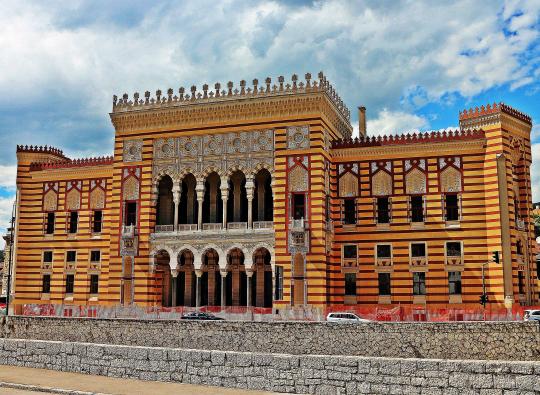
#The Vijećnica (City Hall)#Sarajevo. Built in 1896 under the Austro-Hungarian Empire#the Vijećnica is an example of Moorish Revival architecture#invoking Sarajevo's Islamic heritage while separating itself from the Ottoman architecture found elsewhere in the city.
0 notes
Text
I still love New Mexico real estate listings. They’re like “This iconic adobe structure was built in 1843. There is an abandoned flooded silver mine in the back yard. This home served as a brothel, saloon, general store, post office and military base during the Mexican-American War. The abandoned silver mine in the backyard is infested with vampire bats somehow, you’re not allowed to fill it in because scientists are will studying it. The house was remodeled in the 1970s when archeological excavation of the silver mine revealed it had been the dumping site of a serial killer who was active between 1896 and 1901. Three luxurious bathrooms, 5 spacious bedrooms and a lovely courtyard. Billy the Kid stayed here during the Lincoln County War and reportedly haunts the property. In addition to the vampire bat infestation, there are a number of poisonous spiders inhabiting the mine, do not go in the mine. We cannot warn you away from the mine enough. Otherwise, a fantastic property with so much history and so few malicious entities inhabiting the structure and land. $2.3 million dollar asking price.”
3K notes
·
View notes
Text
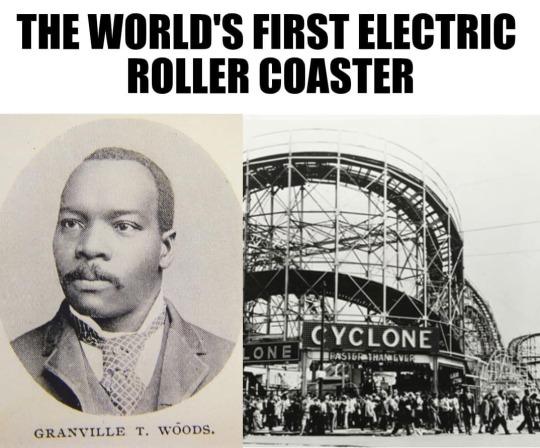
THE WORLD'S FIRST ELECTRIC ROLLER COASTER
Granville T. Woods (April 23, 1856 – January 30, 1910) introduced the “Figure Eight,” the world's first electric roller coaster, in 1892 at Coney Island Amusement Park in New York. Woods patented the invention in 1893, and in 1901, he sold it to General Electric.
Woods was an American inventor who held more than 50 patents in the United States. He was the first African American mechanical and electrical engineer after the Civil War. Self-taught, he concentrated most of his work on trains and streetcars.
In 1884, Woods received his first patent, for a steam boiler furnace, and in 1885, Woods patented an apparatus that was a combination of a telephone and a telegraph. The device, which he called "telegraphony", would allow a telegraph station to send voice and telegraph messages through Morse code over a single wire. He sold the rights to this device to the American Bell Telephone Company.
In 1887, he patented the Synchronous Multiplex Railway Telegraph, which allowed communications between train stations from moving trains by creating a magnetic field around a coiled wire under the train. Woods caught smallpox prior to patenting the technology, and Lucius Phelps patented it in 1884. In 1887, Woods used notes, sketches, and a working model of the invention to secure the patent. The invention was so successful that Woods began the Woods Electric Company in Cincinnati, Ohio, to market and sell his patents. However, the company quickly became devoted to invention creation until it was dissolved in 1893.
Woods often had difficulties in enjoying his success as other inventors made claims to his devices. Thomas Edison later filed a claim to the ownership of this patent, stating that he had first created a similar telegraph and that he was entitled to the patent for the device. Woods was twice successful in defending himself, proving that there were no other devices upon which he could have depended or relied upon to make his device. After Thomas Edison's second defeat, he decided to offer Granville Woods a position with the Edison Company, but Woods declined.
In 1888, Woods manufactured a system of overhead electric conducting lines for railroads modeled after the system pioneered by Charles van Depoele, a famed inventor who had by then installed his electric railway system in thirteen United States cities.
Following the Great Blizzard of 1888, New York City Mayor Hugh J. Grant declared that all wires, many of which powered the above-ground rail system, had to be removed and buried, emphasizing the need for an underground system. Woods's patent built upon previous third rail systems, which were used for light rails, and increased the power for use on underground trains. His system relied on wire brushes to make connections with metallic terminal heads without exposing wires by installing electrical contactor rails. Once the train car had passed over, the wires were no longer live, reducing the risk of injury. It was successfully tested in February 1892 in Coney Island on the Figure Eight Roller Coaster.
In 1896, Woods created a system for controlling electrical lights in theaters, known as the "safety dimmer", which was economical, safe, and efficient, saving 40% of electricity use.
Woods is also sometimes credited with the invention of the air brake for trains in 1904; however, George Westinghouse patented the air brake almost 40 years prior, making Woods's contribution an improvement to the invention.
Woods died of a cerebral hemorrhage at Harlem Hospital in New York City on January 30, 1910, having sold a number of his devices to such companies as Westinghouse, General Electric, and American Engineering. Until 1975, his resting place was an unmarked grave, but historian M.A. Harris helped raise funds, persuading several of the corporations that used Woods's inventions to donate money to purchase a headstone. It was erected at St. Michael's Cemetery in Elmhurst, Queens.
LEGACY
▪Baltimore City Community College established the Granville T. Woods scholarship in memory of the inventor.
▪In 2004, the New York City Transit Authority organized an exhibition on Woods that utilized bus and train depots and an issue of four million MetroCards commemorating the inventor's achievements in pioneering the third rail.
▪In 2006, Woods was inducted into the National Inventors Hall of Fame.
▪In April 2008, the corner of Stillwell and Mermaid Avenues in Coney Island was named Granville T. Woods Way.
471 notes
·
View notes
Text

ARGENTINIDAD
🇦🇷 A Argentinian Historial Sim Download
A few weeks ago my historical tumblr with things related from my country took a lot of relevance, thanks to many resources I realized that there are many people who are interested in having several argentinian sims in their game, so this is for them and everyone interested in the history of different countries (or who need some sim for their game lol).
[More photos, info and download below]
These sims are originally from my Women's Day post inspired by female historical figures from different decades in Argentina. They are doctors, lawyers, writers and much more. But there is a bonus included which is two new sims = Corina Kavannagh and Lola Mora.
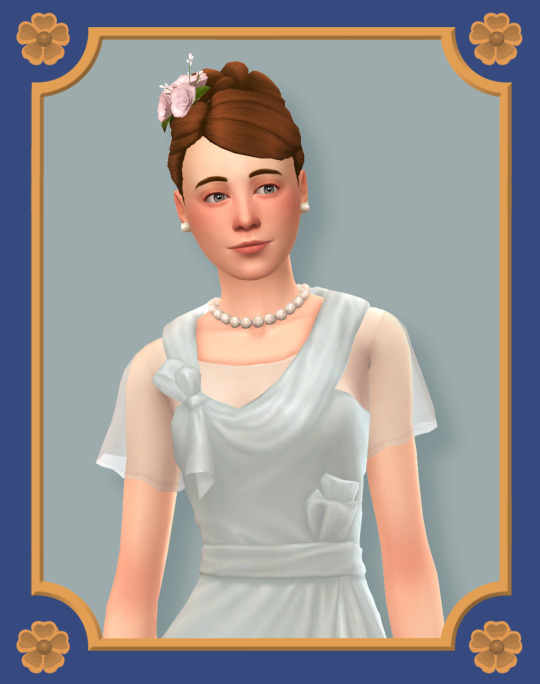
Corina Kavanagh. 1890-1984.
Corina Kavanagh was an Argentinian rancher known for the Kavanagh Building , the tallest concrete skyscraper in Argentina and South America at the beginning of the last century. This building has a legend that says it was built because Corina fell in love with a man of the Anchorena family, one of the most illustrious surnames in Argentina.
The Anchorena's were an aristocratic and landowning dynasty with a Basilica which they could see from their mansion. Corina had a wealthy family but they looked down on her as a "nouveau riche" with no lineage, so the Anchorenas prohibited her from having a relationship with one of their members.
Corina bought the land between the basilica and the mansion and built 120 meters of concrete so that they could not see the church. Since 1936, the only way for the Anchorena family to visit their Basilica was through the Corina Kavanagh passage.

(Lola) Dolores Candelaria Mora. 1866-1936.
The most flattered and discussed Argentine sculptor of her time, the artist who scandalized the society of her time, died in poverty and was vindicated by time.
She began studying portrait and drawing in Tucumán and then obtained a scholarship in 1896 to perfect herself in Rome where she changed drawing for sculpture. There she was highly praised and in 1900 the artist decided to return to the country, where she obtained several state commissions, including the Fountain of the Nereids in 1903. She also faced controversy due to the nudity of her figures, and in her workshop it was common to find her working with pants on the structures of the sculptures.
DOWNLOAD:
Listed below are all the sims to download and with a view of their outfits.
CUSTOM CONTENT NEEDED (Not included)
THE CC FOR EACH ONE IS LISTED HERE
Each zip includes a file explaining how to install it.
It is a google document with all the cc of each creator (some links go to simfileshare because they are cc of some deactivated creator).
AT THE BOTTOM IS LISTED ONE SHEET FOR EACH SIM

SIMS DOWNLOAD:
Mariquita J. P. Sánchez de Thompson. 1786-1868
[SIMFILESHARE]

Felicitas A. G. Guerrero. 1846-1872
SIM: [SIMFILESHARE]

Cecilia Grierson. 1859-1934.
SIM: [SIMFILESHARE]

(Lola) Dolores Candelaria Mora. 1866-1936.
SIM: [SIMFILESHARE]
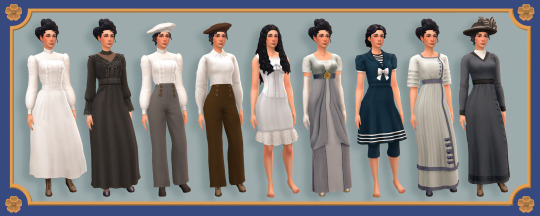
Julieta Lantari. 1873-1932
SIM: [SIMFILESHARE]

María Angélica Barreda. 1888-1963.
SIM: [SIMFILESHARE]
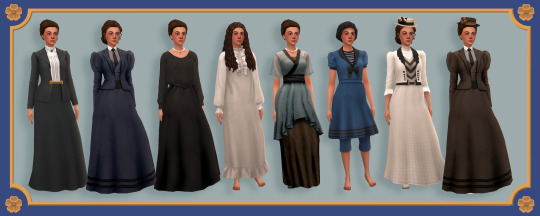
Corina Kavanagh. 1890-1984.
SIM: [SIMFILESHARE]
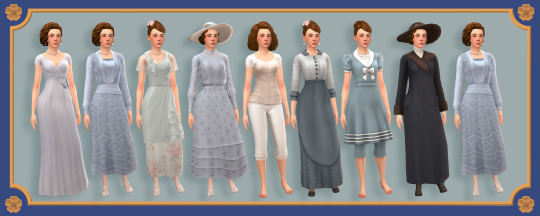
Amalia Celia Figueredo de Pietra. 1895-1985.
SIM: [SIMFILESHARE]
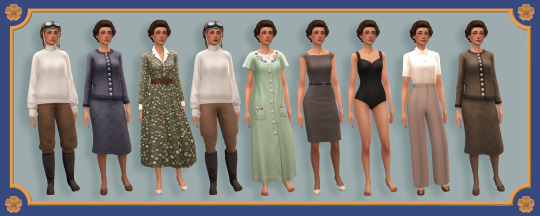
Victoria Ocampo 1890-1979
SIM: [SIMFILESHARE]
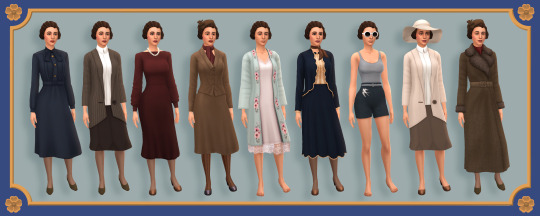
Finlandia Pizzul. 1902-1987.
SIM: [SIMFILESHARE]

KO-FI / CAFECITO
#ts4 Argentinidad#Ts4 Moonsimmers#ts4#sims dump#the sims 4#the sims#sims 4#sims 4 cc#ts4 cc#sims 4 maxis match#sims 4 simblr#ts4 simblr#simblr#the sims community#8M#ts4 story#19th century#ts4 victorian#ts4 edwardian#ts4 female#ts4 female lookbook#ts4 1930s#ts4 1920s#ts4 20th century#ts4 argentina#ts4 sims cc
167 notes
·
View notes
Text
So Inappropriate

A/N: Alright, you guys wanted it, here it is. This little ficlet based off of the video that’s got our Stark Squad all riled up. Leave a comment, heart or reblog if you enjoyed it.
Pairing: Tony Stark x F! Reader
Warnings: 18+ smut-ish fluff. There is a significant age gap between the reader and Tony (say 20 years?) Also the reader is Bruce Banner’s assistant.
Word count: 1896
Tony Stark Masterlist
.
You were just about done arranging the equipment in the lab when you heard the door slide open.
“Dr. Banner, I’m done for the day unless you need me for anything else!” you called out without glancing up, not realizing the person who had walked in certainly wasn’t your boss.
“Dr. Banner has left the premises for the day, Miss Y/L/N. But I might need you for something.”
Tony Stark made an appearance, his signature smirk adorning his face as he traipsed in closer, his walk oozing all sorts of confidence and authority. Of course, your face did very little to hide the blush that creeped up, heating your cheeks in an instant.
Why did this man have such an influence on you? You’d never know.
Well, not exactly. It was pretty obvious. The genius, billionaire, playboy and philanthropist had this effect on most individuals. His natural charisma and intimidating presence was all wrapped in an impeccably trimmed-goatee-bearing handsome package. The guy was senior to you. Much senior. But there was something about him that always drew you in, an impish charm that was all too endearing, his commanding aura that compelled you to behave. Almost challenged you to confront your deepest, darkest desires.
“Earth to Y/N?” he snapped you out of your reverie, making you accidentally knock over a set of beakers kept on the platform.
Cursing under your breath, you bent to pick up the shattered glass as did Tony, resulting in your head banging against his, further adding to your embarrassment.
Just great!
“Careful, you’re gonna hurt yourself.” Tony murmured, taking the shards of glass from your hand as Dum-E, one of his bots zoomed in to sweep it all away.
“Thank you, Mr. Stark. I–I’m sorry.” you fumbled, wincing as you saw you an angry drop of red ooze out of your finger from where you had evidently cut yourself.
“Ah, you poor thing. C’mere.” not awaiting a response, Tony clutched your hand and brought it to his lips, gently sucking on your index finger all while his eyes bore into yours.
A part of you wanted to run away from the scene like a scaredy cat but, the other part was completely rooted to the spot. Not daring to move an inch, as if if you did, your little daydream would break. Your cheeks probably burnt with the heat, and you could feel your pulse rush to the part of your finger that was currently in his mouth, smarting. His tongue soothed over the cut softly, sending tingles of desire down your back, the moistness between your legs increasing with his little action.
He is your boss. Not exactly but he built this place. He was your boss’s best friend. These thoughts were quite inappropriate.
Almost as quickly as it began, he let go of your hand, his touch still lingering strong as you cleared your throat, watching his bot whir away from the scene.
“Thank you, I think. Um. For your help.” you stared at your feet, unsure what to do next.
You grabbed your things and stuffed them in your bag, very aware of the fact that Tony and signature smirk were following your every move.
Why was this man allowed to have this effect on you?
You stopped right by the door, turning back to face the man who hadn’t moved from his spot.
“Uh, Mr. Stark? You said you wanted me for something?”
“Right! Well, we have a charity, inauguration, felicitation, something here at the Tower in two days. I wanted you to come.”
He shoved his hands in his pockets, looking at you intently as he waited for an answer.
“Oh! Are–are you sure?”
That was a surprise. You had been working with Dr. Banner for a better part of a year now however it had always been strictly professional. You were aware of the many, many galas and events that took place, you were just never a part of them. Until now.
“Yeah. I’ll have Big Green send you the details. You can bring a date. Or not.”
He winked cheekily, walking up the stairs right next to you before the doors slid open once again, gesturing you to go first.
Needless to say you were flabbergasted. A rush of excitement brought a pep in your step as you headed home, going through your wardrobe in detail and what could be a Stark-party-worthy outfit.
.
Tony’s eyes scanned the room, eager to find you in a sea of impeccably dressed people. He couldn’t shake you off from his thoughts. Not for a while now, if he would admit to himself.
His curiosity grew ever since he saw you for the first time, entering the lab and giving Bruce Banner a shy smile, eyes locking with him and holding his gaze, almost unable to look away. He sensed you were nervous, it was cute. It made his cock stir. He could not remember the last time he felt this way. You were a young, smart, vivacious thing that was too young for him, and yet he couldn’t resist you.
Not that he tried. You drew him in right from the start.
Tony had found you chatting animatedly to your boss some time later. You looked stunning in the floor-length number you had decided on. Your features were beautifully highlighted with the hair and make-up you’d chosen.
His wish to have you closer had been fulfilled as the party warmed up, people sat around in groups, drinks in their hands while conversation flowed. Of course, the Avengers had a favorite corner they had gathered at, the center of attention being the one and only, Iron Man. He was awarded a trophy for his philanthropic work earlier which now sat in his lap proudly, an almost phallic-shaped glass that had his name etched.
“I can’t be the only one thinking this.” Tony smirked, holding the award against his crotch and earning collective groans from the crowd around. The action brought warmth rushing to your cheeks, your wildly imaginative mind pictured him doing that to his member, letting out soft grunts.
“You alright, Miss Y/L/N?” Your attention was captured by someone standing next to you, pointing to your dress.
Unknown to your preoccupied self, the filled glass of wine you held had tilted enough to spill on your dress.
“Oh God! Shit!” you exclaimed, turning a few heads your way as you grabbed a few tissues to blot the spilled liquid as much as you could. The darker color of your dress masked the big stain that had probably formed.
It was hard to miss Tony’s piercing gaze as he gave you one of his lopsided grins, clearly giddy with the reaction he had hoped his stunt would achieve. If anything, one fact was becoming clearer by the day.
Your attraction towards this man was increasing and it seemed he was equally interested in you too.
.
It had been a hectic week, you sighed and leaned back against your chair, closing your eyes for a moment as your exhausted body relaxed momentarily. You couldn’t wait to get home and soak your butt in a hot bubble bath.
With the events of Ultron, there had been extra work load that you had volunteered to help out with at the Tower. You didn’t mind, of course. It meant spending a lot of time with the Avengers and a particular one at that too. Tony spent hours, sometimes days holed up in the lab, working with Bruce and yourself.
It was almost impossible not to be distracted or turned on by his presence there. To see him laser-focused at work, fingers gliding over keyboards and holograms in front of them as he paced about the space. It was all too hot.
Shutting your computer for the day, you grabbed your things and made your way out of the lab. Tony had retreated back to his floor some time ago and had promptly forgotten his phone on his work desk. It rang with a start, catching your attention and making you walk back in to grab it.
It wasn’t uncommon for you to bother the billionaire genius in his home since there had been multiple occasions where Dr. Banner asked you to summon the man whenever he got a lead on Ultron.
The elevator dinged to a stop, the doors opening to his grand living room that offered a view of New York people would kill for. His bedroom door seemed left ajar as you made your way over, stopping in your tracks as you heard a muffled groan.
Curiosity got the better of you as you sneaked a look inside his bedroom, not able to stop yourself as the sounds increased.
You felt your mouth go dry at the sight before you. Tony lay on his bed against the pillows, eyes scrunched up, pants undone., soft sighs leaving his lips as his hand moved up and down on his erect cock.
It felt so wrong to watch him pleasure himself in the privacy of his own home and yet so right, you felt yourself blush at the sight. It was like you were unable to look away, he had his fingers wrapped around his shaft, moving at a steady pace as you saw precum leak at the tip of his head. His pretty, thick lips were parted while his chest rose and fell, eyes shut in ecstasy.
You were about to peel your gaze away from the scene when you heard a faint whisper of what you thought was your name.
“Oh Y/N..” his breathy moan sent desire to pool right between your legs, a part of you still processing the whole thing while the other wanting to push that door open and join the man or perhaps help him finish.
His thumb swiped across his red tip before the pace of his strokes increased, his pants echoed in the room while you felt your entrance clench around nothing, desiring the very man who was masturbating while thinking of you.
You were sure your panties were ruined by the time Tony’s hips jerked and you saw him climax, ropes of cum spurting from his cock and spilling on his hand and lower abdomen. That had to be the hottest thing you’d seen in your life.
You definitely needed to take care of yourself after this, that bubble bath was going to be an elaborate one. His softened cock still lay open for your eyes to feast on, his cum scattered on his body begging you to be licked clean.
Your thoughts came to a standstill when the phone you held in your hand rang terribly loudly, interrupting the little moment. Your scramble to hide or run was rendered useless when Tony glanced outside and saw you.
“It is rude of you to just stand out there and watch, Miss Y/L/N. So inappropriate.”

#tony stark x reader#tony stark fanfiction#tony stark fluff#tony stark smut#tony stark x y/n#tony stark imagine#tony stark one shot#tony stark fic#tony stark x you#the stark squad#marvel fanfiction#mostly marvel musings#tony stark
186 notes
·
View notes
Photo

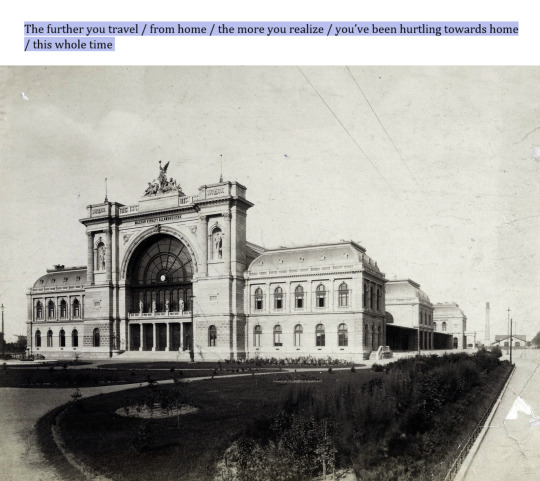

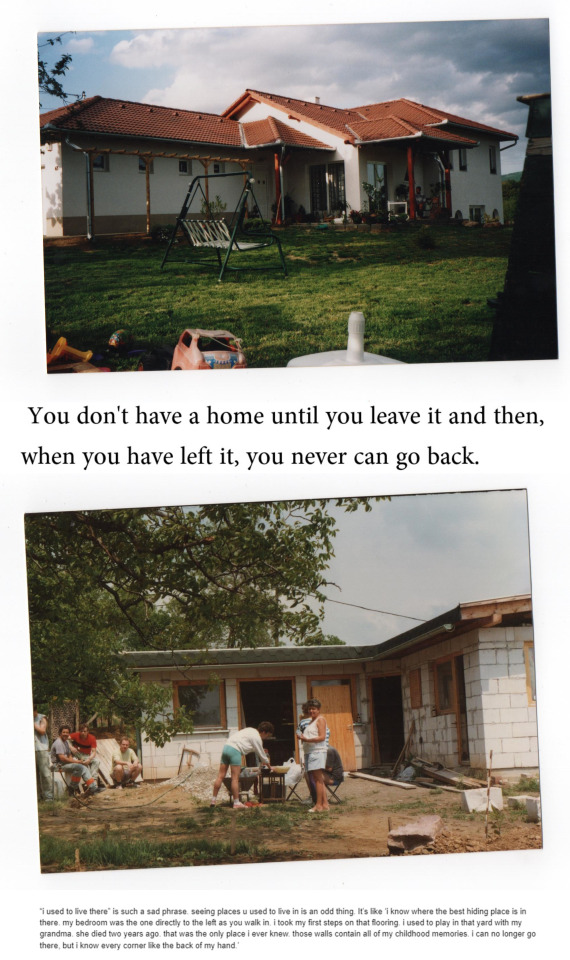
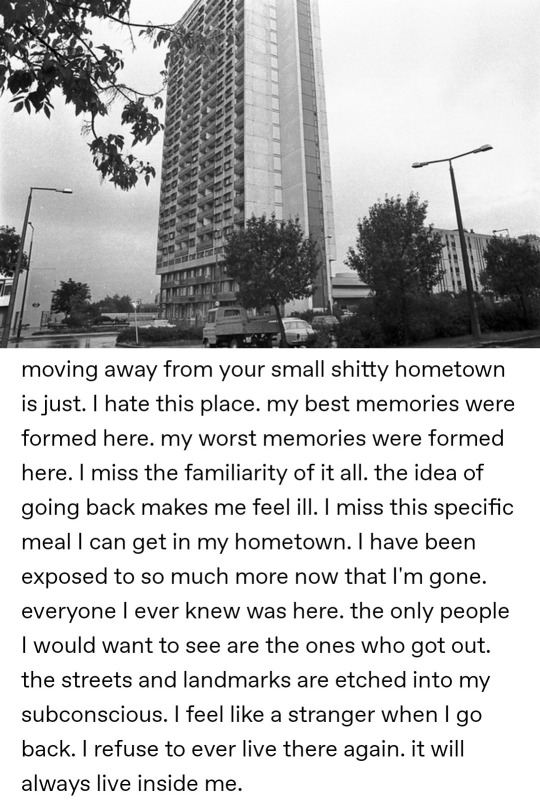


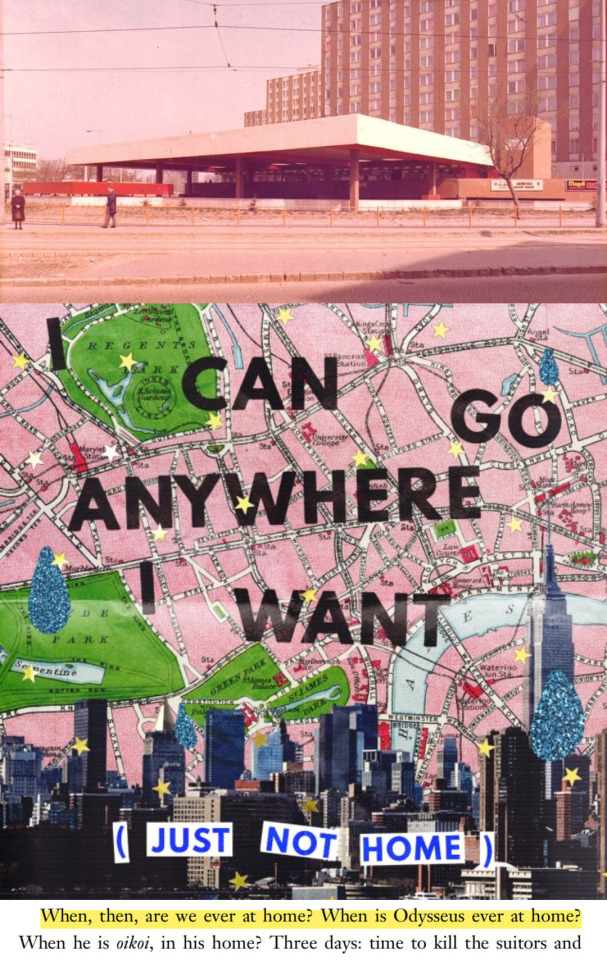
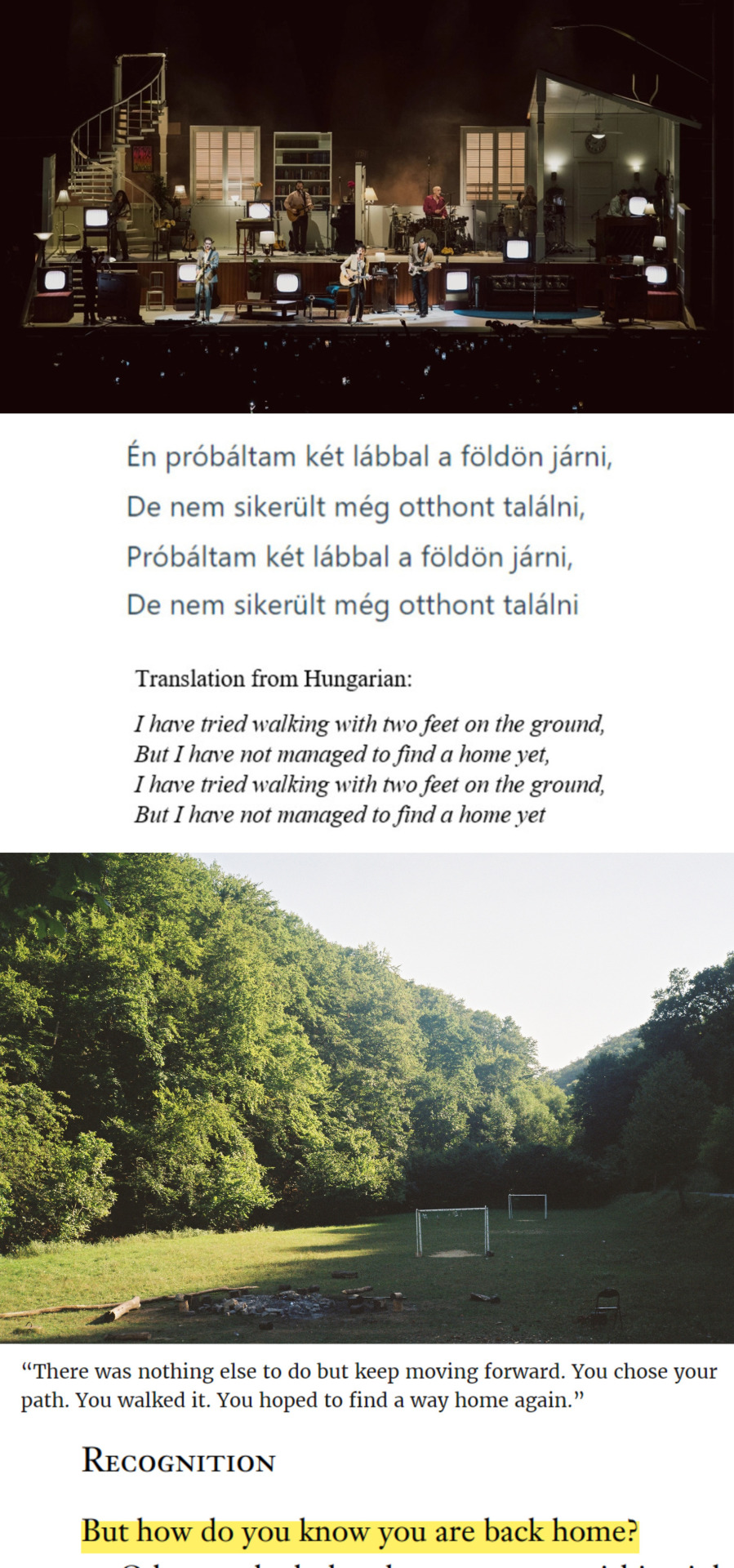

a foreigner is a foreigner everywhere (variations on the theme of home)
[ Clementine von Radics, ‘Courtney Love Prays To Oregon’ // The backyard of my family home with my parents’ first dog, in Boda, Hungary, early 2000s // Fatimah Asghar, ‘How’d Your Parents Die Again?’ // Brandon Melendez, ‘How to Write Heisenberg’s Uncertainty Principle into a Promise to Return Home’ // My dad on the main street of the village I grew up in, 2005 // Melendez, ‘How to Write Heisenberg’s Uncertainty Principle into a Promise to Return Home’ // Keleti Railway Station in Budapest, 1900 // Melendez, ‘How to Write Heisenberg’s Uncertainty Principle into a Promise to Return Home’ // The hills of my childhood landscape, the Mecsek mountain range in South-West Hungary // Casey McQuiston, Red, White & Royal Blue // My childhood home in Hungary, 2004 // James Baldwin, Giovanni’s Room // My parents’ first house being built by friends and family members, around 1995 // @wvterways on tumblr // The iconic 25-story high-rise building of Pécs, my birthplace, 1985. The building became a ghost town in 2003 (incidentally, the year of my birth) and was then demolished in 2016 // @waitineedaname on tumblr // Uránváros, (a city district in Pécs, Hungary) in 1960, the neighbourhood of my grandparents’ apartment // @ohevoyev on tumblr // Danez Smith, ‘from “summer, somewhere”’ // Hungarian Parliament Building, 1896 // @electraheart2012 on tumblr // Analogue picture of Kőbánya-Alsó (Budapest X. District), the neighbourhood of our Budapest apartment // @cruellesummer on tumblr, lyrics from taylor swift’s my tears ricochet // Barbara Cassin, ‘Odysseus and the Day of Return’ in Nostalgia: When Are We Ever at Home? // Stage design of the 1975’s 2022 ‘At Their Very Best’ Tour // Bohemian Betyárs, Lebegő // The campsite of the summer camp I used to go to as a child, Óbánya, Hungary // Leigh Bardugo, Rule of Wolves // Cassin, ‘Odysseus and the Day of Return’ // Trinity College Dublin (my university), covered in snow, 1994 // Neil Gaiman, American Gods // Esterházy, Péter. ‘A mi a bánat’, Élet és Irodalom, 1996. 51–52.]
#web weaving#parallels#home#quotes and thoughts#web weave#i got a bit carried away length wise but im home for christmas and i have Feelings
1K notes
·
View notes
Photo
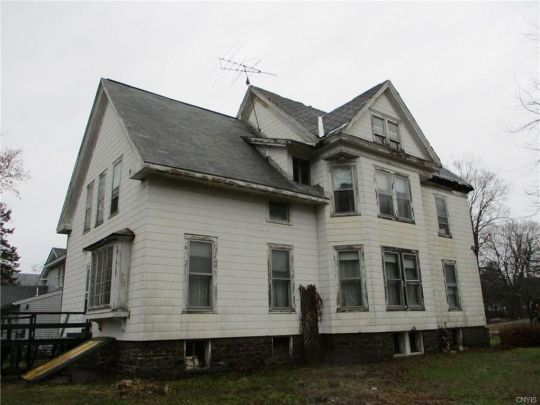


Pulaski, New York
built in 1896
1K notes
·
View notes
Text
Details In Luis Serra’s Character Design:

I have been wanting to do this post for a little while, but I finally got the push I needed when @theprestigegirly helped me solve a few little mysteries hidden in the character design itself that I was trying to solve. I am by no means saying no one has stated this before, just that this is the first we’ve noticed it.
WARNING: LONG-ASS POST
• 1) The Red-9:

The Red 9 is an interesting choice of gun to give Luis. The photo of Luis and his grandfather was taken when he was about 5, meaning that Luis would have been born sometime around 1976. The Red 9 was built around 1896, almost a full century before Luis would have been born. No one else from Valdelobos seems to really have guns, as the town is so backward. So how did he get this collectors gun? Well, Luis’s grandfather was a hunter. It could be very likely that he inherited the gun from his grandfather after he died.
•2) Jacket Patterns:

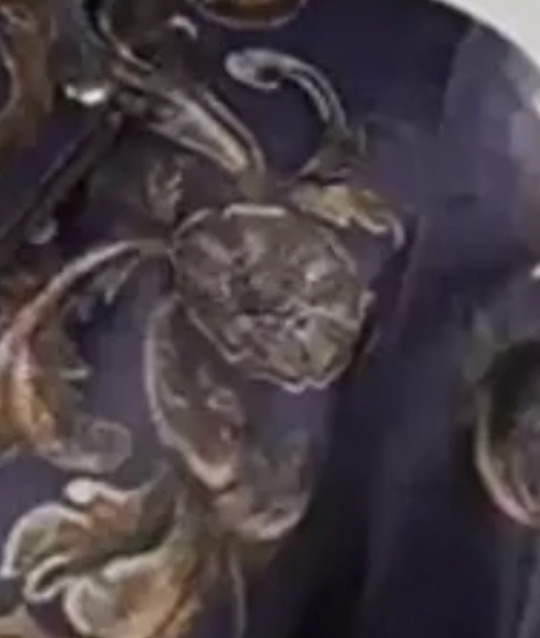
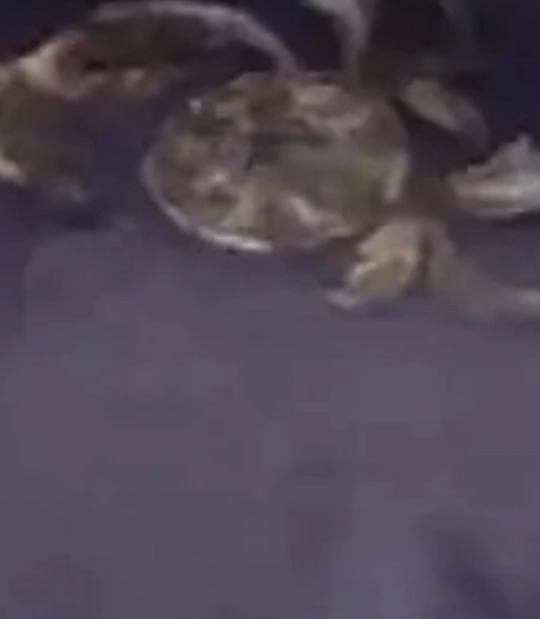
With the help of @theprestigegirly, I actually think we might have found some interesting details. There seem to be mysterious circle-shapes on his jacket and came up with two possibilities:
They are wheels, specifically windmill wheels, representing Don Quixote.
They are a flower called a Pink Peony. Now that’s an interesting choice of flower simply because of what it represents.

Considering the many very obvious verbal “appreciation” Luis makes of Leon, this could be interpreted as a reference to Luis’ “Ladykiller” persona, and his homoerotic relationship with Leon throughout the game.
The flower also represents honor, which ties into the whole Don Quixote parallels.
• 3) Names On The Lighter:

We never really get a close look at Luis’ lighter in-game, and most people know it came from Umbrella, but me and @theprestigegirly decided it was time to try and interpret the actual names on the lighter, because it can be assumed that those are the names of his fellow scientists.

The names, as we interpreted them, went as follows:
• Hansel Hernandez
• Orivia Smith
• Jean-Jacques Clouet
• Maria Igesias
• Alfred Snider
• Maximilian Wegener
• Frances Alcher
• Charles Lee
Personally, I find it very fitting and symbolic that he carries the names of his lab colleagues around both physically and mentally. He seems to be quite the sentimental fellow (but we all knew that already)
Alright! That’s it! I just felt like analyzing some parts of the character that I felt weren’t touched on enough, and with the help of @theprestigegirly, I think I have a pretty decent theory analysis for you all today.
Thanks for sticking through the long ass post, and special thanks to @theprestigegirly for helping me with this and literally staying up to 1 in the blessed am to humor my shenanigans!
#resident evil 4 remake#luis serra#luis serra navarro#re#re4r#resident evil#serrenedy#re4r leon#leon kennedy#resident evil 4#theorycrafting clover
235 notes
·
View notes
Photo
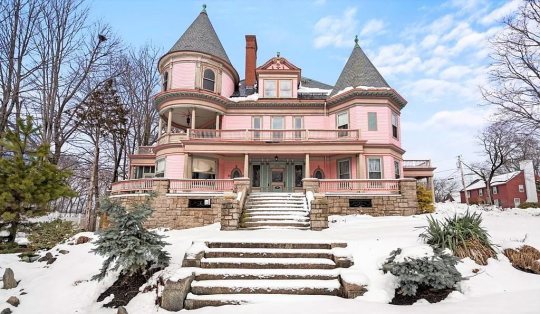
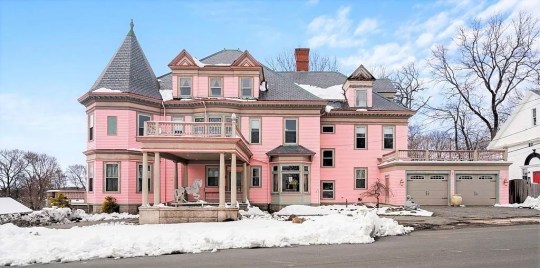
Of course, it’s a pink Victorian, my favorite, but it looked a little in need of TLC, until I was blown away by the interior. You must see this 1896, 6bd., 4ba. home in Haverhill, Massachusetts. $865K.

The gigantic entrance hall is stunning and colorful.

Just look at this inglenook. A brick fireplace, fancy built-in benches w/wainscoting, and the inlaid in that floor!


How gracious is this staircase? And, look at the pastel stained glass.

She’s so beautiful, look at her ceilings and millwork.
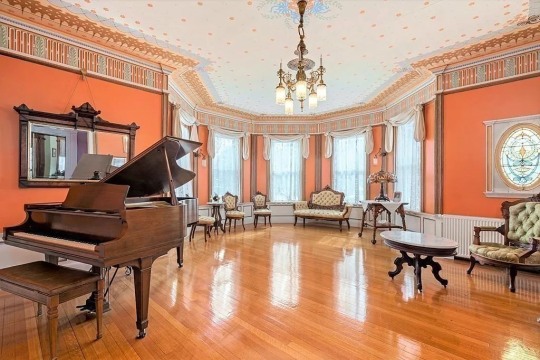

Fabulous music room. Love that they decorated the borders & ceilings. That has to be an original lighting fixture, as well.
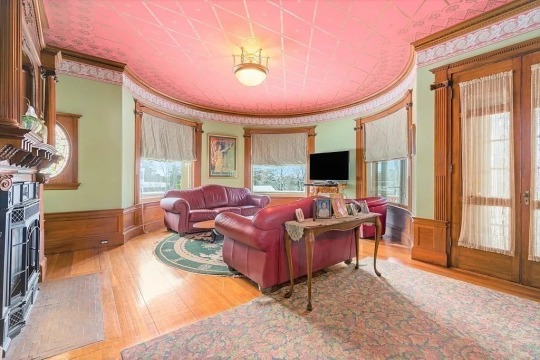
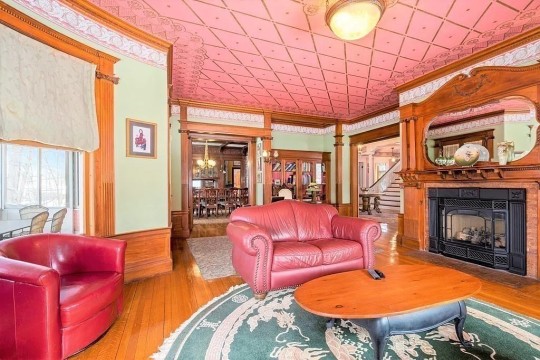
As large as this room is, it’s cozy. The mirror over the fireplace is stunning.
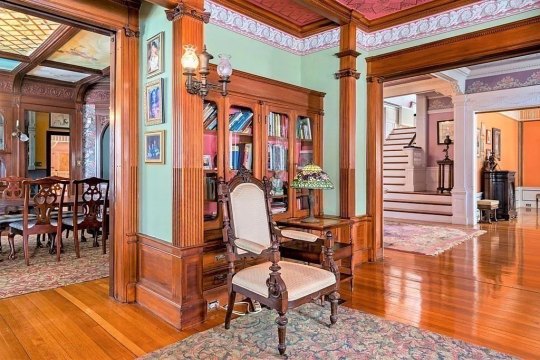
Perfect- a reading chair in front of a built-in shelf.
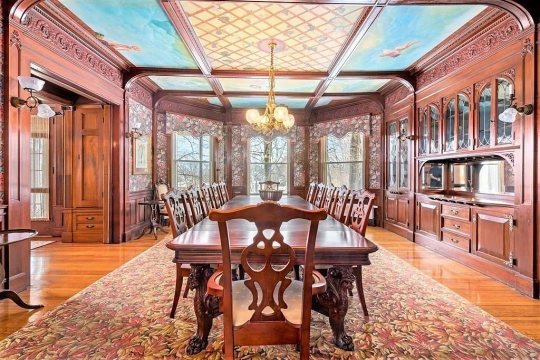
The wood in the dining room is nothing short of spectacular- that built-in.

Plus, 2 corner built-ins. Amazing dining room.

The faux finish on the pantry cabinets is a little weird. Not into the laminate countertops & backsplash, either.

Love the color of the kitchen. The cabinets, not so much.


Another fireplace, wainscoting, and bow window graces this room.


Isn’t the 2nd fl. landing pretty? It’s also very large. Love the pastels.


Very spacious, bright main bd.

Pocket doors open to this room w/access to the upper deck.



Love the art in the secondary bds. I would leave them as they are.



You must know by now how I love vintage Victorian bathrooms. Aren’t these fabulous? Love them all. Original sinks and tubs!

And, there’s nothing like a home w/a porte cochere. Notice the large deck above it- what a great idea. Plus it’s also on .32 acres.
https://www.zillow.com/homedetails/40-Westland-Ter-Haverhill-MA-01830/56050510_zpid/
1K notes
·
View notes
Text

The forestry pavilion built for the Millennium Exhibition, Budapest, 1896. From the Budapest municipal photography company archive.
83 notes
·
View notes
Text
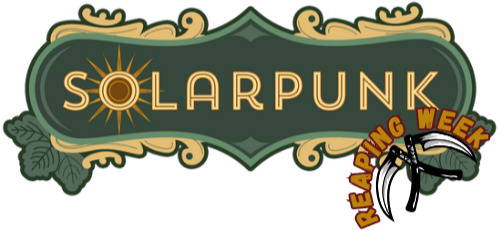
Community gardens-
Community gardens are a piece of land gardened or cultivated by a group of people, which you can do individually or collectively. So they can be done on private or public land.
Community gardens are not only a testament to community care and mutual aid, it's also almost a radical act of protest and activism. You're combining and sharing resources, which is inherently anti-capitalist, and you're actively protesting climate change by cultivating the land and bringing back native plants. They exist in various forms, it can be located in the proximity of neighborhoods or on balconies and rooftops. They are far from a one size fits all, they are built to meet the needs of the people cultivating them.

History-
this is gunna be a long one yall--
1890s-- Rapid urbanization in Europe and North America lead to community ran gardens to supplement food stocks that the city couldn't maintain causing an obscene cost of food. Thus lead to cities across the world attempting in their own ways to handle the problem-
1893 - Detroit Mayor Hazen S. Pingree took office with citizens even calling for “bread or blood”. In the mist of this crisis the city establishes a program that required vacant lots to be used as gardens and farms for the unemployed citizens have access to food. The deal the city basically makes is 'we will provide the land for you to farm, you feed yourself by farming it!' Later called "Potato Patches" would convert thousands of acres of vacant and idle land in the city for subsistence gardens, then cultivated by the unemployed in order to ensure citizens access to food regardless of the employment or economic status. At its peak, 1563 families participating over 430 acres of donated or City land. This would become so successful that later other cities like Boston and Buffalo would later adopt similar programs.
In England, “allotment” gardens were created to improve working-class people’s food provision, living conditions, and overall health of people living in suddenly crowded city centers.
Marseille in 1896, “les jardins d’ouvriers”, or ‘the workers’ gardens’, were created by a clergyman, with the purpose of reducing the misery of the working class and improving living condition.
1917- The War Gardens Commission was established to call on citizens to become, "Soldiers of the soil," planting gardens to meet some of their own domestic need for food as well as solider rations. (talk about abandoning your citizens for the sake of war >.>) Providing booklets, cartoons, and plenty of propaganda to teach everyone able to grow and preserve their own food supplies. War and Victory Gardens running well through the 1920s into the 50s. Often communties would have a vacant lot or shared spaces to also fullfill any need that wouldnt fit on private land. By 1944, between 18 to 20 million families with victory gardens were providing up to 40% of the vegetables in America.
1970s - In major cities that were fighting both economic crisis and urban decay as a result of white flight to the suburbs. Bringing rise to community groups like The Green Guerillas- built of horticulturalists, gardeners, botanists, and planners who work to turn abandoned or empty spaces in New York City into gardens. The group threw "seed grenades" into derelict lots and developed community gardens, often without going through official channels. It became especially popular after the concerted redevelopment of a dangerous, trash-filled space at the corner of Houston Street and Bowery in Manhattan. That first and now oldest recognized community garden in New York City on a street corner, grew to be over an acre and remains active as of 2023 now named the Liz Christy Garden after its founder who wanted a safe space and good food for children in her community.
2010-Current
Millions of community gardens spanning across the entire world have been reestablished. Particularly over the course of 2012 on wards in order to get back to connecting with the soil and feeding low income housing. Many of the gardens today also hold other community functions like yoga and woodworking classes, socializing centers, holding events, and act as a 3rd space where there are so few these days. Becoming more like a community hub over just a simple source of food.

How do I join or create a community garden?
Join an existing garden- look up one in your area here
To create your own, you will need to do your own research on your city or towns bylaws but generally you'll need a few things-
Gather friends/group to garden with
Secure a place to garden, as well as access to water
Gardening Equipment
Happy Gardening!!
Also @solarpunkani this is for you!!!
216 notes
·
View notes
Text

THE WORLD'S FIRST ELECTRIC ROLLER COASTER
Granville T. Woods (April 23, 1856 – January 30, 1910) introduced the “Figure Eight,” the world's first electric roller coaster, in 1892 at Coney Island Amusement Park in New York. Woods patented the invention in 1893, and in 1901, he sold it to General Electric.
Woods was an American inventor who held more than 50 patents in the United States. He was the first African American mechanical and electrical engineer after the Civil War. Self-taught, he concentrated most of his work on trains and streetcars.
In 1884, Woods received his first patent, for a steam boiler furnace, and in 1885, Woods patented an apparatus that was a combination of a telephone and a telegraph. The device, which he called "telegraphony", would allow a telegraph station to send voice and telegraph messages through Morse code over a single wire. He sold the rights to this device to the American Bell Telephone Company.
In 1887, he patented the Synchronous Multiplex Railway Telegraph, which allowed communications between train stations from moving trains by creating a magnetic field around a coiled wire under the train. Woods caught smallpox prior to patenting the technology, and Lucius Phelps patented it in 1884. In 1887, Woods used notes, sketches, and a working model of the invention to secure the patent. The invention was so successful that Woods began the Woods Electric Company in Cincinnati, Ohio, to market and sell his patents. However, the company quickly became devoted to invention creation until it was dissolved in 1893.
Woods often had difficulties in enjoying his success as other inventors made claims to his devices. Thomas Edison later filed a claim to the ownership of this patent, stating that he had first created a similar telegraph and that he was entitled to the patent for the device. Woods was twice successful in defending himself, proving that there were no other devices upon which he could have depended or relied upon to make his device. After Thomas Edison's second defeat, he decided to offer Granville Woods a position with the Edison Company, but Woods declined.
In 1888, Woods manufactured a system of overhead electric conducting lines for railroads modeled after the system pioneered by Charles van Depoele, a famed inventor who had by then installed his electric railway system in thirteen United States cities.
Following the Great Blizzard of 1888, New York City Mayor Hugh J. Grant declared that all wires, many of which powered the above-ground rail system, had to be removed and buried, emphasizing the need for an underground system. Woods's patent built upon previous third rail systems, which were used for light rails, and increased the power for use on underground trains. His system relied on wire brushes to make connections with metallic terminal heads without exposing wires by installing electrical contactor rails. Once the train car had passed over, the wires were no longer live, reducing the risk of injury. It was successfully tested in February 1892 in Coney Island on the Figure Eight Roller Coaster.
In 1896, Woods created a system for controlling electrical lights in theaters, known as the "safety dimmer", which was economical, safe, and efficient, saving 40% of electricity use.
Woods is also sometimes credited with the invention of the air brake for trains in 1904; however, George Westinghouse patented the air brake almost 40 years prior, making Woods's contribution an improvement to the invention.
Woods died of a cerebral hemorrhage at Harlem Hospital in New York City on January 30, 1910, having sold a number of his devices to such companies as Westinghouse, General Electric, and American Engineering. Until 1975, his resting place was an unmarked grave, but historian M.A. Harris helped raise funds, persuading several of the corporations that used Woods's inventions to donate money to purchase a headstone. It was erected at St. Michael's Cemetery in Elmhurst, Queens.
LEGACY
▪Baltimore City Community College established the Granville T. Woods scholarship in memory of the inventor.
▪In 2004, the New York City Transit Authority organized an exhibition on Woods that utilized bus and train depots and an issue of four million MetroCards commemorating the inventor's achievements in pioneering the third rail.
▪In 2006, Woods was inducted into the National Inventors Hall of Fame.
▪In April 2008, the corner of Stillwell and Mermaid Avenues in Coney Island was named Granville T. Woods Way.
#granville t woods#black inventor#invented#world's first#electric roller coaster#1893#read about him#read about his invention#reading is fundamental#knowledge is power#black history
123 notes
·
View notes
Video

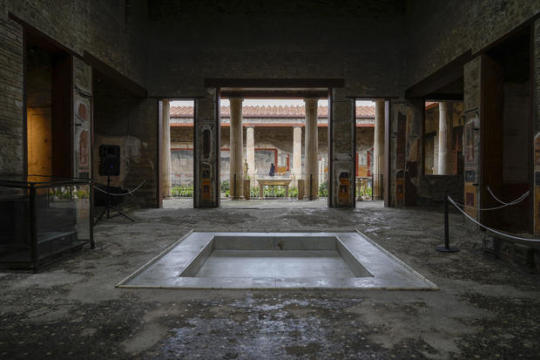
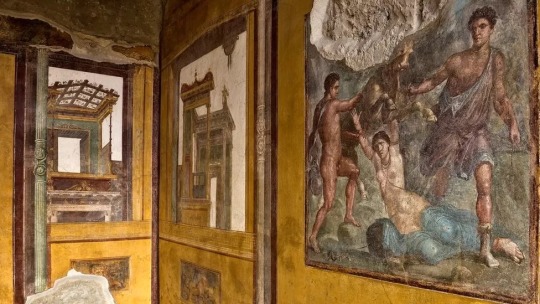

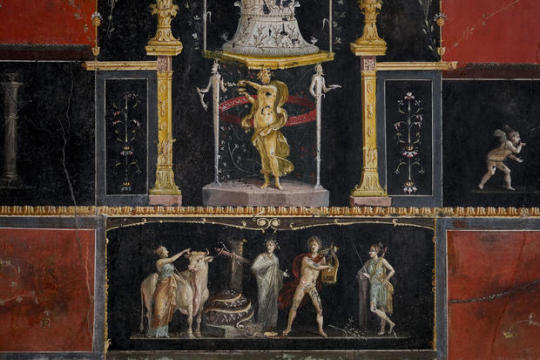
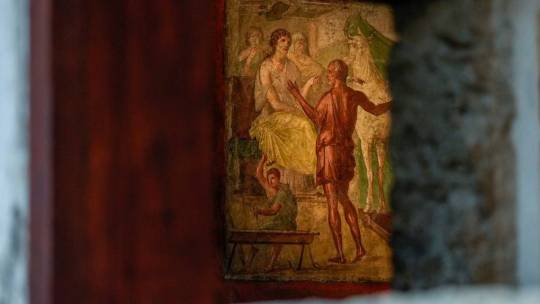
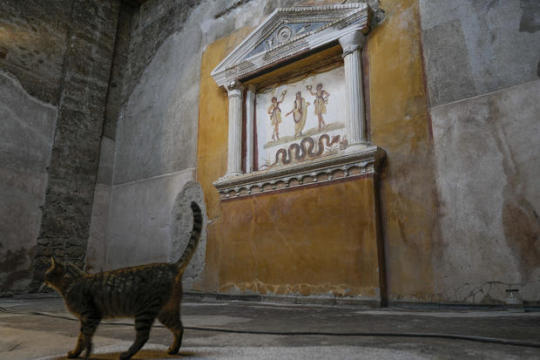




House of the Vettii
Pompeii home owned by former slaves reopens.
The House of the Vettii, known as Pompeii's Sistine Chapel, has reopened to the public for the first time in 20 years after an extensive restoration.
The house, built in the second century BC, was buried in the eruption of Mount Vesuvius in AD79.
It was named after its owners, the Vettii brothers, two former slaves.
Aulus Vettius Conviva and Aulus Vettius Restitutus got wealthy by selling wine after they were freed.
Adorned in mythological frescos and phallic sculptures, the house reopened on Tuesday after years of restoration work.
Excavation works carried out between late 1894 and early 1896 showed that the ancient Roman townhouse, built on top of the ruins of an earlier house, had survived the eruption of Mount Vesuvius.
"The owners, freedmen and ex-slaves, are the expression of a social mobility that would have been unthinkable two centuries earlier," said Gabriel Zuchtriegel, director of the Archaeological Park of Pompeii.
He added that the brothers became rich by trading agricultural products from the surrounding area in Pompeii - but added that prostitution was also practiced in their house.
In the house, the Greek god of fertility and abundance, Priapus, is depicted in a fresco weighing his own phallus against a bag of money.
Ornate furnishings inside the house, as well as Greek and Roman sculptures in bronze and marble, offer a glimpse into the lifestyle of the elite.
#Pompeii#Pompeii's Sistine Chapel#The House of the Vettii#Mount Vesuvius#Aulus Vettius Conviva#Aulus Vettius Restitutus#Priapus#frescos#mosaics#ancient artifacts#archeology#archeolgst#history#history news#ancient history#ancient culture#ancient civilizations#roman history#roman empire#roman art
629 notes
·
View notes
Text
Preliminaries: War of the Utility Wares!
Most pottery you find in archaeological sites isn't painted. Most pottery is unslipped, undecorated utility ware - with the assumption that "utility" typically here means "cooking over a fire." Sometimes grain storage. Usually cooking, though.
It doesn't mean they can't be beautiful in their own right. And one of my friends is working on a dissertation which among other things argues that "surface treatments" like incising and corrugation should be considered "decoration" too, when usually in archaeology "decorated" means "painted." There were lots and lots and lots of types of utility wares. Some were plain. Some were gorgeous.
So this is a Preliminary Round - four different styles traditionally called utility ware will go up against each other... only two will move on to represent utility wares in the final bracket.
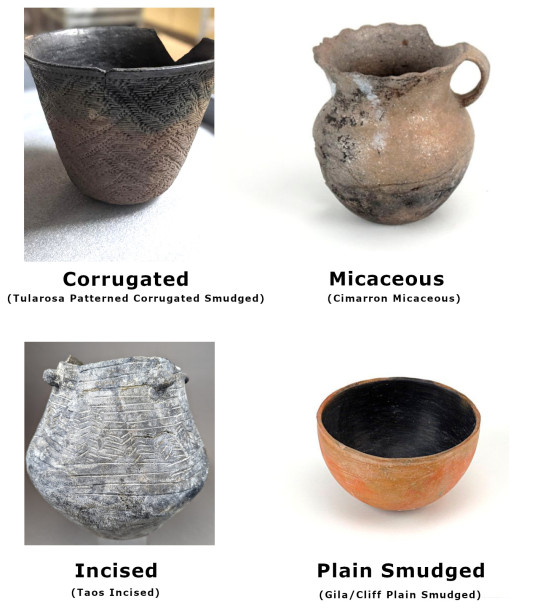
Vote for your favorite: More information about each is under the cut:
Corrugated
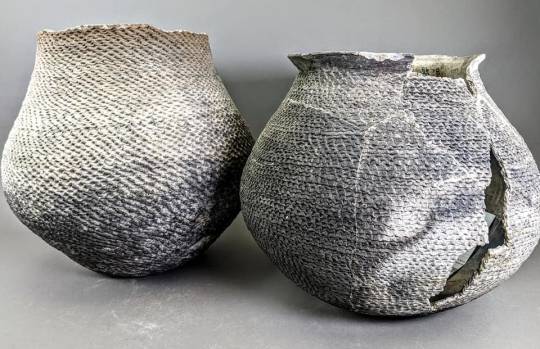
Mesa Verde Corrugated jars. Southern Colorado, AD 1100-1300.
There are SO many different types of corrugated pottery; if I listed them all we'd be here all day. However, they all have commonalities: They were primarily (though not exclusively) made in the Mogollon cultural region, primarily (though not exclusively) plain and unpainted, and primarily (though not exclusively) used for cooking.
In this region, potters don't use pottery wheels. Pots are hand-built, typically from coil-building: using many thin coils to build up the shape of the pot. For most pots, those coils are scraped smooth as they're still wet. But for corrugated pots, those coils are only scraped smooth on the inside. The outside coils are instead pressed using a tool or the potter's thumb to make a patterned, scaled, or woven texture. Corrugation, due to its association with cooking pots, is not typically considered "decoration" by archaeologists, but it creates beautiful and captivating patterns.
Micaceous

Micaceous Bowl with Etched Flowers. Made by Virginia Romero (Taos Pueblo, 1896-1998).
In northern New Mexico, there are golden-red clays with a lot of sparkly mica in them. The mica self-tempers the clay, and creates a lovely shimmering effect when you see the pots in person. There's evidence of polished micaceous pottery being made as early as the 1300s, but it really took off as a popular type of cooking ware in the 1500s-1600s. In this time, it was made primarily by norther Pueblos like Taos, Picuris, and Nambe, but was enthusiastically adopted by the Jicarilla Apache as well, who have strong social ties to those northern Pueblos. Cimarron Micaceous, the handled jar seen above the cut, is a 1600s Apache micaceous pottery style.
Micaceous pottery is still extremely popular with Native potters today. Some of it is as an art form, with many different experiments in structure and style, but some people still swear by cooking in these micaceous clay pots - beans just taste better when cooked in clay instead of metal!
Incised

Taos Incised jar sherd. Northern New Mexico, AD 1050-1300.
Incised ware is SO underappreciated. However I am also biased because for the past three or four summers I have worked on an archaeology project in the Taos area and we find so much of it.
Incised designs are carved into the wet clay. Usually, these are not painted. Incised pottery is very common on the Great Plains, but less so in the Southwest. The Northern Pueblos like Taos and Picuris, however, has long-standing interactions with Plains groups, trading corn and buffalo hides, holding market days together, Picuris and Taos people fleeing the Spanish invasion to live in Kansas with their Apache allies. This is also visible in the sharing of pottery styles in the northern Pueblos, where incised ware is common. Parallel lines that mimic corrugation, chevrons, and herringbone patterns are common.
Plain Smudged

Reserve Plain Smudged, Mogollon Highlands, AD 600-1250.
As I described in my pottery jargon post, "smudging" is a method of getting that shiny black interior during the firing stage. During firing, different levels of oxygen will cause the minerals in the clay to turn different colors. An oxidized environment (high oxygen) turns iron-rich clays red; a recducing atmosphere (restricted oxygen) plus an infusion of carbon turns them black. To smudge a pot, the inside is polished, and then in the firing pit is covered with ash and charcoal. This puts a lot of carbon on the surface, and blocks the oxygen from reaching it. When the pot comes out of the fire, the part that was covered in charcoal will be shiny black. This was another pottery style particularly popular in Mogollon areas.
47 notes
·
View notes
Text
youtube
Barcelona's Antifascist Revolution Unveiled in Rare Anarchist Durruti Funeral Video from 1936 - He died on this day
Rare newsreel footage from José Buenaventura Durruti Dumange's (14 July 1896 – 20 November 1936) funeral in Barcelona, attended by more than half a million anarchists.
He died on 20 November 1936, at the age of 40, in a makeshift operating theatre set up in what was formerly the Ritz Hotel. The bullet was lodged in the heart; the diagnosis recorded was "death caused by pleural haemorrhage". The doctors wrote a report in which the path of the bullet and the character of the wound was recorded but not the calibre of the bullet, since no autopsy was performed to remove it.
His driver's gave the following testimonial about the events that lead to his death: "We passed a little group of hotels which are at the bottom of this avenue [Avenida de la Reina Victoria] and we turned towards the right. Arriving at the big street, we saw a group of militiamen coming towards us. Durruti thought it was some young men who were leaving the front. This area was completely destroyed by the bullets coming from the Clinical Hospital, which had been taken during these days by the Moors and which dominated all the environs. Durruti had me stop the car which I parked in the angle of one of those little hotels as a precaution. Durruti got out of the auto and went towards the militiamen. He asked them where they were going. As they didn't know what to say, he ordered them to return to the front. The militiamen obeyed and Durruti returned towards the car. The rain of bullets became stronger. From the vast red heap of the clinical hospital, the Moors and the Guardia Civil were shooting furiously. Reaching the door of the machine, Durruti collapsed, a bullet through his chest."
--- It is we the workers who built these palaces and cities, here in Spain and in America and everywhere. We, the workers. We can build others to take their place. And better ones! We are not in the least afraid of ruins. We are going to inherit the earth. There is not the slightest doubt about that. The bourgeoisie might blast and ruin its own world before it leaves the stage of history. We carry a new world here, in our hearts. That world is growing in this minute.
— Buenaventura Durruti -
#Durruti#antifa#antifascist#antifascism#spain#espana#spanish#revolution#civil war#spanish revolution#Youtube
61 notes
·
View notes
Note
As quite a few Presidents were Secretaries of State and so many politicians vied for the position, when and why did that stop being the "gateway" to the Presidency?
That is a really good question.
You're correct that being Secretary of State was seemingly a stepping-stone to the Presidency at one point early in American history. Five of the first eight Presidents were Secretary of State prior to being elected President (Jefferson, Madison, Monroe, J.Q. Adams, and Van Buren). Madison, Monroe, and John Quincy Adams were elected President directly from the State Department. But James Buchanan was the last President who had served as Secretary of State.
I think that one of the reasons that being Secretary of State was, as you said, a "gateway" to the Presidency in the early years of the republic was because it was one of the few positions in government that built obvious foreign policy experience for the holders of that job at a time when the country was still a pretty isolated, insular nation. The Secretary of State is basically the American version of a foreign minister, of course, but because it was the premiere Cabinet post (and still is), the Secretary of State often had higher name recognition nationally than anyone in government other than the President at a time when the Vice Presidency was an afterthought with very little influence. From the beginning of the federal government, the State Department was a very important part of the Executive Branch, so the early Secretaries of State also gained valuable administrative experience which only helped their cause when it came to running for President.
I think the reason that Secretaries of State stopped being viable candidates for President is because the the growth of the country meant that their were more-and-more qualified candidates who had gained the foreign policy or administrative experience through other means. The country started turning to military leaders and Governors, as well as candidates with more significant Congressional experience than was possible at the early stage of American history when Jefferson, Madison, Monroe, and J.Q. Adams were going from the State Department to the White House. After Buchanan's election, not only were there no other Secretaries of State elected President, but very few were even nominated. James G. Blaine briefly served as Secretary of State in 1881 until a few months after President Garfield died in office and was the Republican Presidential nominee in 1884 (he served as Secretary of State again from 1889-1892), but since then, the only major party Presidential nominee who had previously served as Secretary of State was Hillary Clinton (Secretary of State from 2009-2013) in 2016.
In fact, the reverse has been true more frequently in recent history. Since 1884, four major party nominees for President have served as Secretary of State AFTER losing Presidential elections. Blaine lost the 1884 election and served as President Harrison's Secretary of State from 1889-1892 (again, that was his second stint at the State Department after his brief 1881 service). William Jennings Bryan was the unsuccessful Democratic nominee for President in 1896, 1900, and 1908, and went on to serve as President Wilson's first Secretary of State (1913-1915). Charles Evans Hughes was the Democratic nominee in 1916 and lost to Wilson, but went on to serve as Secretary of State under Presidents Harding and Coolidge (1921-1925). And John Kerry was the Democratic nominee in 2004 and later served as President Obama's second Secretary of State (2013-2017).
It's really difficult today for any Cabinet member to be elected directly to the Presidency (or even get close to the nomination -- just ask Julián Castro about his 2020 campaign). While there is no job that can truly prepare someone for the modern Presidency, Governors tend to be in a better position than Cabinet secretaries or members of Congress. Only four incumbent members of Congress have been elected directly to the Presidency -- James Garfield (1880), Warren G. Harding (1920), John F. Kennedy (1960), and Barack Obama (2008). And Garfield is the only sitting member of the House of Representatives to have been elected President. While the position of Secretary of State remains the prime Cabinet post in the United States, the days of the Cabinet being the gateway to the Presidency seem to have gone away with powdered wigs and shoe buckles.
#History#Presidency#Presidents#Cabinet#Secretary of State#Secretaries of State#State Department#Presidential Elections#Presidential Candidates#Presidential Experience#Politics#Political Elections#Thomas Jefferson#James Madison#James Monroe#John Quincy Adams#James Buchanan#Martin Van Buren#Cabinet Secretaries#Presidential Cabinets
38 notes
·
View notes